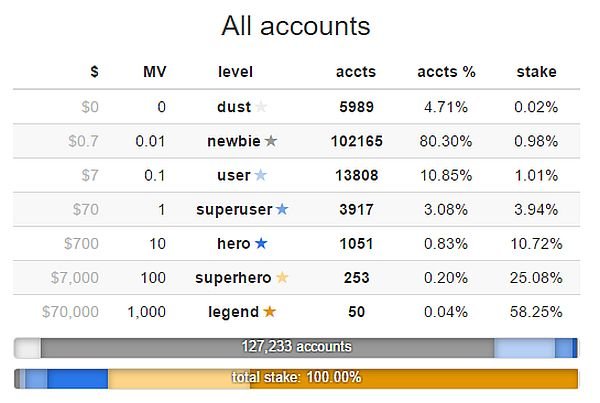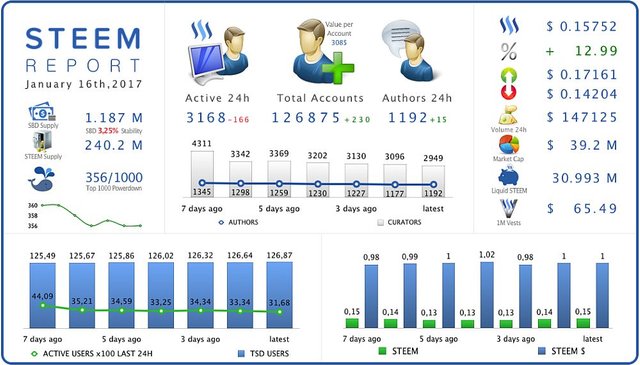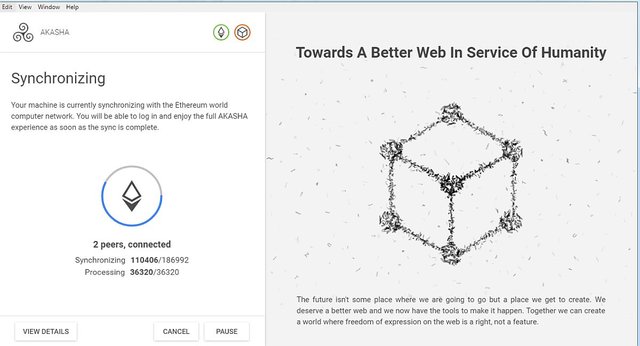Social network on the blockchain: what happened during the year

Decentralized social network in late 2015 and have been recognized as one of the most promising applications based on the blockchain and smart contracts. The main advantages of such networks was called decentralization (most often here, followed by the opposition of Facebook, with its dictatorial manners), absence of censorship (as opposed to Reddit), and a unique property – the ability to earn money by writing posts and commenting: the economy of attention.
At the beginning of 2016 in development there were three major project social networking: Steemit, Akasha and Synereo. Here is the status of these projects for mid-January 2017.
Steemit
Steemit is the only project working at full capacity, even though his name and the designation "Beta". The network is deployed on the platform Grafene II of the project Bithshares. It is a blockchain with a hybrid mechanism of consensus: Delegatury POS + POW. The network was launched in may 2016 and in June, the first payments to the users.
Followed by rapid growth, and on 1 August the capitalization of its main cryptocurrencies (STEEM) reached its historic high of 392 million dollars, for a short time, rising to third place on Coinmarketcap.com. However, immediately after the record growth has been sure drop and as of January 2017 capitalization STEEM fluctuates near the mark of $ 35 million, which is more than 11 times less than the August highs.
The reasons for the fall fairly well researched, and December 6, 2016 was held hardwork, radically changed the economic system of the network. Markets generally responded positively to hardwork, but after a brief recovery was followed by a predictable decline: with the aim of increasing liquidity term withdrawal of funds frozen in STEEM POWER, was reduced from two years to 3.5 months, and a large number of users started to withdraw capital. Pessimistic forecasts about the fall of the rate of 3-4 times due to withdrawal of capital did not materialise, and in mid-January the course STEEM has found balance and is in the range 0.13 — 0.17 USD per STEEM.
It seems that the change of economic model has led to positive results. However, the social model of reputation, or the balance of Apatow (likes) and flags (negative feedback, causing a fall in payments) remained unchanged. This model has long been the object of criticism: the owner of a large balance one svom flag may deny the reward and reputation of the author whose post has received broad support from ordinary users. Besides, the vast majority of capital is concentrated in the hands of the "whales" – the founders and the first miners Steemit (the amount of capital is not in STEEM POWER, and in mvest – 1 approximately equal to mvest 479 STEEM POWER):

There is a widespread practice of collusion whales when they consistently vote for a particular material that can belong to himself through a dummy account, thus depleting the pool of rewards. Lately this practice has led to a sharp conflict between the whales and one of the founders Steemit, Dan Larimer (Dan. Larimer, accounts Steemit @dan and @dantheman), between which started a real "War of Thrones". Briefly, the flags, which were conceived as means of struggle with pornography, criminal and offensive content began to serve as a weapon to settle personal scores.
Another problem faced by the economy of attention – the vote bots. The number of automatic appatow many times greater than the number of actual hits posts. This is easily seen by opening any post and comparing the number of Apatow with the number of hits (both values are listed at the end of the post). In fact, from this follows another disappointing conclusion: a total number of 127 thousand accounts, real users are no more than a few thousand people. This is clearly seen on the chart the number of active users for periods of 7 days, (C) user Steemit @me-tarzan:

However, Steemit continues to evolve around it created an extensive ecosystem of applications: browsers units (in fact, the web sites for viewing content), marketplace, sets, statistical tools, chat and other applications. The interface is comparable with the largest social networks, and the developers actively respond to user queries.
Another trend emerging in recent years: a number of projects developing in the framework social network, leaves the platform and creates a standalone application on the blockchain Steemit. Did the project Steemsports, originally existed as a free betting site on Steemit: users have bet their own vote on the outcome of sporting events, and receive real money, without risking anything – after all, the reward they received from the amount of payment per post. Of course this could not last forever, and the pillars brought down the business. Now this is separate from Steemit project Steemsports using the blockchain Steemit, and even going to hold an ICO, however, now its members need to make real bets, with the risk of losing money.
Another interesting project, the public version of which the founders are going to launch in the next two weeks: a new social network completely independent from Steemit, but on the blockchain Steemit – busy.org. About the economic system yet, little information, and the organizers say that if Steemit to some extent similar to reddit and Medium, Busy.org be more like Facebook and Twitter. Digital wallet the new network will allow you to make payments around the world without a fee, which gives the new network more similarities with the Chinese network Wechat. However, any user Steemit also can transfer Dollars or Steem STEEM from your wallet to another user Steemit without a fee.
For completeness, we should mention the Russian-speaking licensed clone Steemit – Golos.io. This is a copy Steemit, completely in Russian, and is intended for Russian-speaking community. The only difference in the economy of the project lies in the fact that the analogue of Steem Dollar token Gold, is not tied to the US dollar, and equal to 1 milligram of gold. The project operated for only a few months, but all of its possible problems is completely analogous to Steemit because it is its exact copy.
In conclusion, the infographic from Steemit for January 16 from user @elyaque:

Akasha
Social network on the public blockchain of Ethereum. Until the full project is still very far, however, are in accordance with the roadmap project, stage 1. As long as the network exists in alpha version 0.3, the test network. To see her work, you need to download and install the app.
As long as the network allows only the simplest of actions: to write and comment posts, and appetite and downvoting strangers. Every new member gets 5 test esters (AETH). All transactions paid customary transaction fees Ethereum: publication of post, apvat, comment, every action is a transaction, but the test network payment is in AETH. Of course, compared to the Steemit all looks very primitive.

Respect promotes ready integration with a decentralized system IPFS – media files are stored on IPFS, and not to other resources like Steemit.
After familiarization with the test version of Akasha raises confidence that the full launch of the network on Ethereum will be possible only after the transition to the consensus POS (Casper): even on the test POW network of 200,000 units, the completion of any operation you have to wait 10 to 15 seconds. For comparison Steemit – 3 seconds, Casper – no more than 4 seconds (planned).
Synereo
The saddest part of the story. The project is considered promising, almost stopped. After the conflict, the founders, the decision made by the shareholders: Greg Meredith, who was responsible for the development of blockchain Rchain, dismissed. Thus, Rchain blockchain and decentralized network file storage SpecialK, the first app which was supposed to be the Synereo social network, will not.
General project Director, Dor Conforti (Dor Konforty) in the company blog said, on 20 January, he will present a new plan for the development of Synereo social network based on Attention Economy. However, judging by the comments of participants of the branches Synereo in Reddit, most of whom are the owners of the tokens AMP purchased on ICO trust this statement has caused. Indeed, not having a platform of smart contracts, it is not clear how Conforti is going to realize your project.
Of course, Ethereum and Bitshares – public blackany and Rchain architecture was most similar to Ethereum with POS and sharding, but to compete with Steemit and Akasha project, supported by the founders of the platforms, at least unwise. As assumptions except that you can recall Lisk. In General, at the beginning of 2017, Synereo nothing to offer the product.
Source link: https://bits.media/news/sotsialnye-seti-na-blokcheyne-chto-sluchilos-za-god/?sphrase_id=83059
18.01.2017
Material provided: Qandros
The material is taken from the orphanage from different sites it took a few hours to assemble such a post. Thank you all who rated it. All good mood ( @krasotka )

Nice research. Thank you for all your effort. Good job!